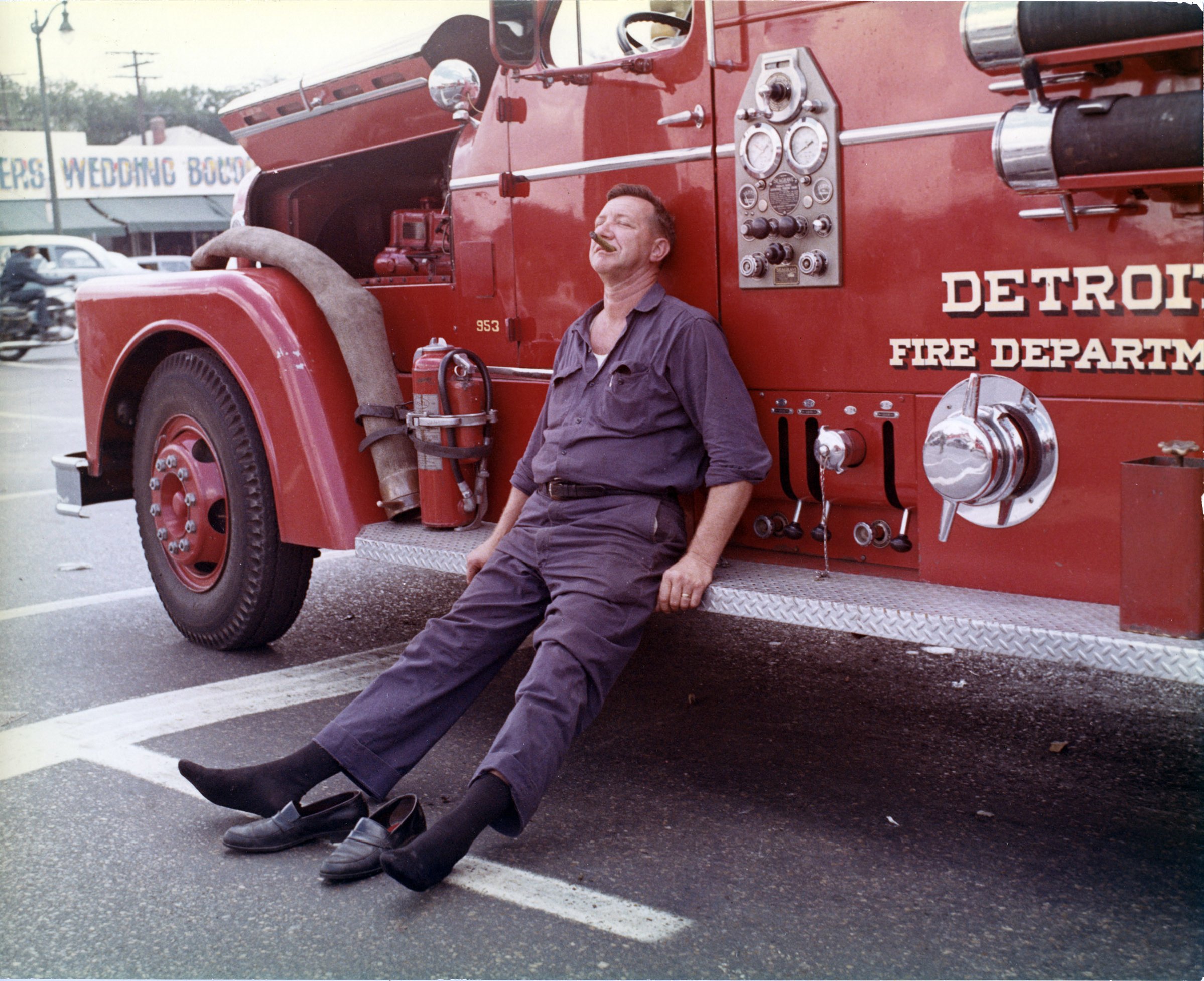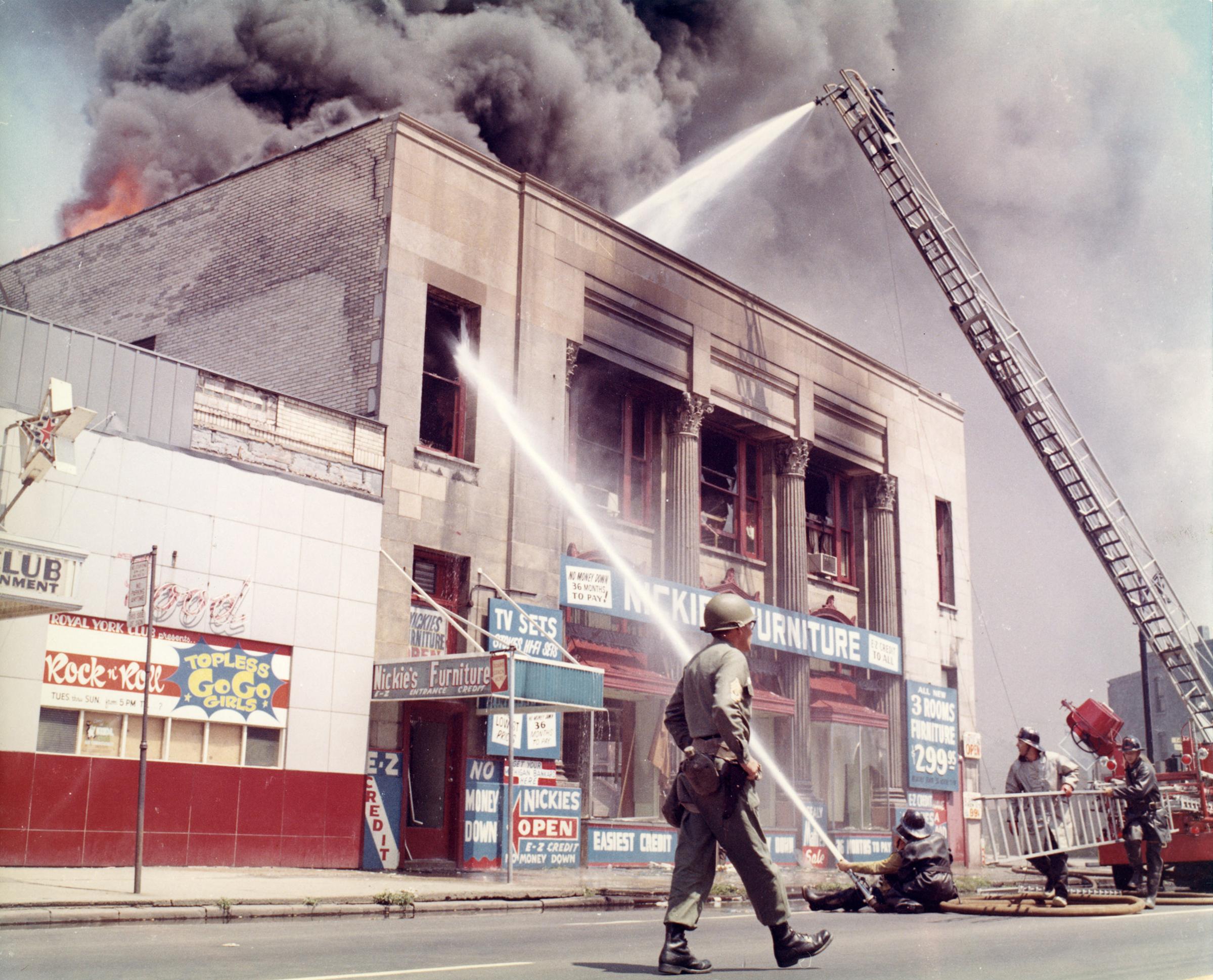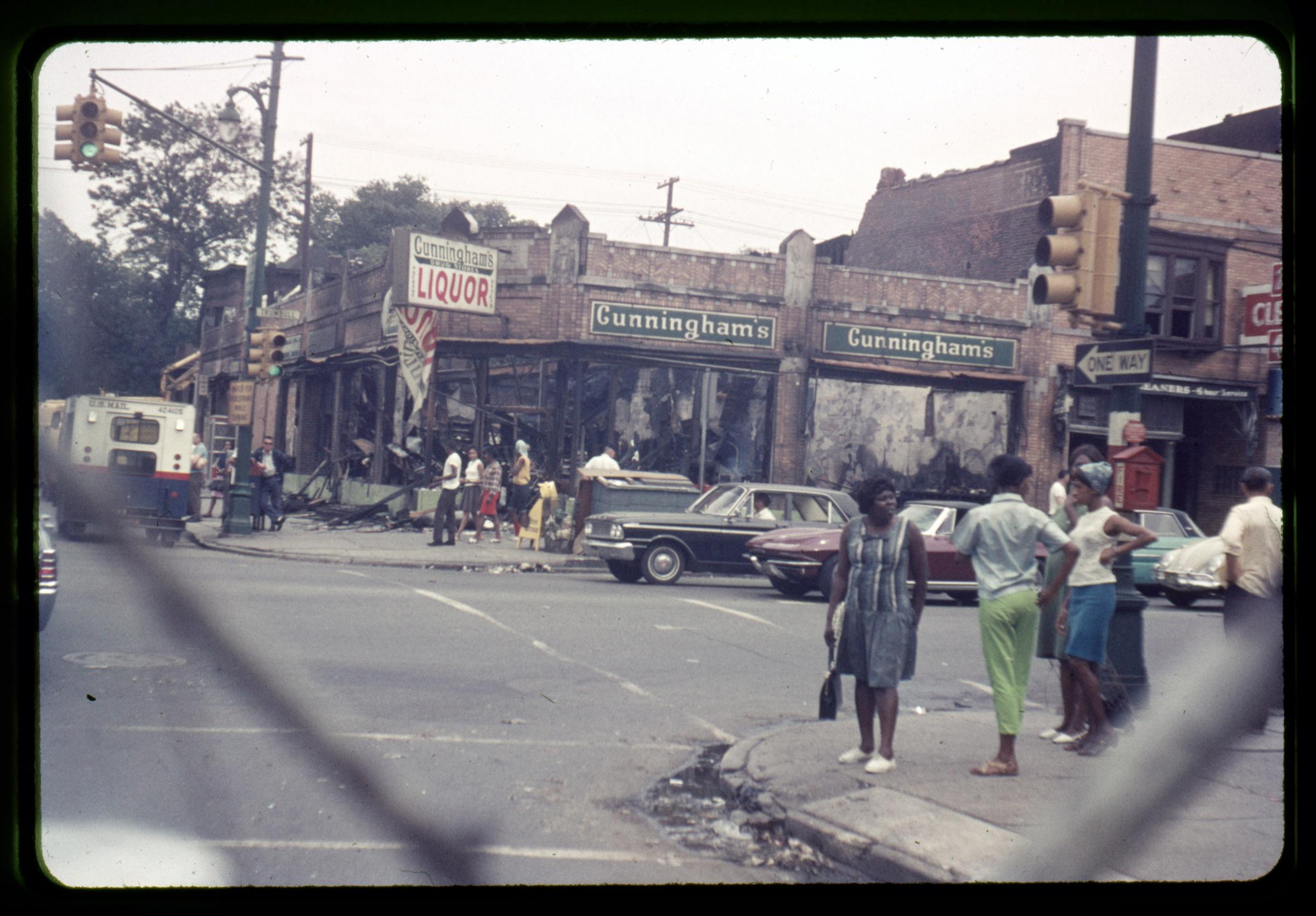
When the new film Detroit opens nationwide on Friday, most moviegoers will likely focus their attention on the dramatic confrontation between police and citizens that it portrays. But some may also notice another group of individuals who risked their lives to save others: the Detroit Fire Department. During the film’s opening segments, newsreel footage shows firefighters being assaulted with bricks and bottles by the very people they’re trying to help.
The 50th anniversary of the 1967 riots — seen in the photos above, from the archives of the Detroit Historical Society — has been a time of reflection on the past and hope for a better future among those who lived through its five days of violence, and that includes the Detroit firefighters.
“We just did what we had to do to the best of our ability,” retired Detroit Fire Department Senior Chief, Darryl Binder, now 80, recently recalled. Binder had six years on the job at Engine 11 when he found himself in the midst of the riots, which he says kept him on the job for three days straight. “We never stayed in one place very long. We just kept moving from one fire to the next.”
The riot had begun before dawn on July 23, when about 80 partygoers were arrested at an illegal after-hours bar at 12th Street and Clairmount. Once the group was hauled off to the 10th precinct in paddy wagons, an enraged mob of hundreds of African-American citizens vented their anger with the city’s largely white police force by looting, vandalizing and burning local businesses. The fires that began Sunday in one corner of the city quickly spread across 100 square blocks of Detroit. Entire neighborhoods were burning.
“I felt bewildered by all those fires,” said Larry Kosmalski, now 73, who became Chief of the Fire Department in 2002, but was just a 23-year-old kid at the time. “I began questioning what I was doing for a living. I couldn’t understand why people would burn out their own brothers and sisters, their own families and their own homes. I was seeing people that I didn’t think would normally break into a building and steal clothes and bicycles. I saw a safe come out of a building and break open. Jewelry and diamonds were all over and people were punching each other to get at it… I asked one black man, ‘Why are you doing this?’ He said, ‘Man, when you’ve got nothing, you’ve got nothing to lose.’”
Once informed of the civil unrest, Police Commissioner Ray Girardin contacted Detroit Mayor Jerome Cavanagh, who in turn alerted Michigan Governor George Romney. By early Sunday afternoon, Cavanagh requested assistance from the Michigan State Police and by late afternoon, from the Michigan National Guard. On Monday night, the crowds had grown in size, spreading across the city’s 139 square miles. As fires raged and looting escalated, Governor Romney declared Detroit in a state of emergency.
“It was a madhouse,” said retired Detroit Fire Department Senior Chief Joseph Bozich, 79, who was working as a firefighter at Engine 17 at the time. “We saw hundreds of people looting stores. There seemed to be a pattern going on. We were fighting a fire in a storefront and we’d see a crowd down the street break into a store. Then they would come out with groceries, beer or television sets. Then it seemed like another group of people went in there—and all of a sudden the storefront was on fire. It was progressing down the street one after the other. There weren’t enough firefighters or police to stop them. The citizens of Detroit were burning down their own homes, their own churches and their own stores. Everything around them, they were just burning it down.”
After 24 hours of turmoil, President Johnson authorized the Governor’s request for federal troops. In addition to the 6,800 Michigan National Guardsmen who had already arrived in Detroit, 3,300 U.S. Army paratroopers had been deployed.
“We were grateful when the National Guard and the 101st came in because we were getting bottles and rocks thrown at us,” said Binder.
Two Detroit firefighters lost their lives during the unrest. Carl E. Smith, 30, of Ladder 11, was killed by gunfire at the corner of Mack and St. Jean. John Ashby, 26, of Engine 21, was electrocuted by a high-tension wire while fighting a fire at a supermarket at Lafayette and Canton.
After more than five days, the rioting finally came to an end. By then, the Detroit Fire Department had fought 1,682 fires. An additional 276 fires were fought by the 45 suburban fire departments that provided mutual aid. Out of the 1,609 structures that were damaged, 417 of them were completely destroyed. In addition to the 43 people killed, an estimated 5,000 Detroiters were left homeless.
For Kosmalski, who had only been on the job for three months at Engine 43, those five days were a lesson in the contradictions inherent in conflicts of that scale. He recalls that African-American residents who lived in the neighborhood of the firehouse where he was stationed brought the firefighters food and drinks to keep them going —“It was stacked up to my chest in the kitchen at the firehouse,” he said; “you could see the empathy they had for us” — even amid what has historically been referred to as a race riot.
“It was tough knowing that our own guys were dying,” Kosmalski says, “but I feel fortunate that I was a part of the greatest fire department in America.”
Nikolas Charles is a journalist and photographer based in Los Angeles and Detroit












More Must-Reads from TIME
- Donald Trump Is TIME's 2024 Person of the Year
- Why We Chose Trump as Person of the Year
- Is Intermittent Fasting Good or Bad for You?
- The 100 Must-Read Books of 2024
- The 20 Best Christmas TV Episodes
- Column: If Optimism Feels Ridiculous Now, Try Hope
- The Future of Climate Action Is Trade Policy
- Merle Bombardieri Is Helping People Make the Baby Decision
Contact us at letters@time.com